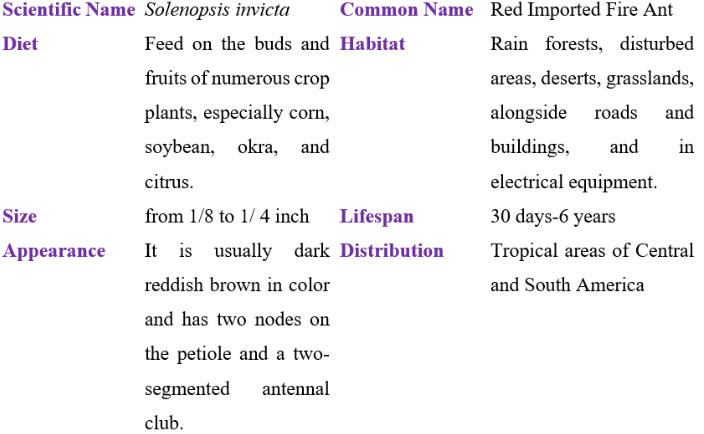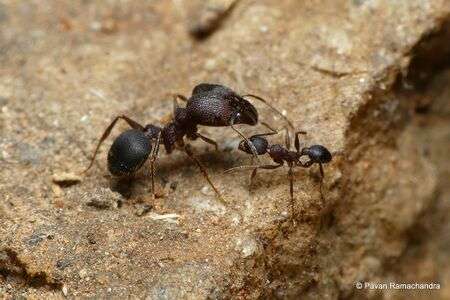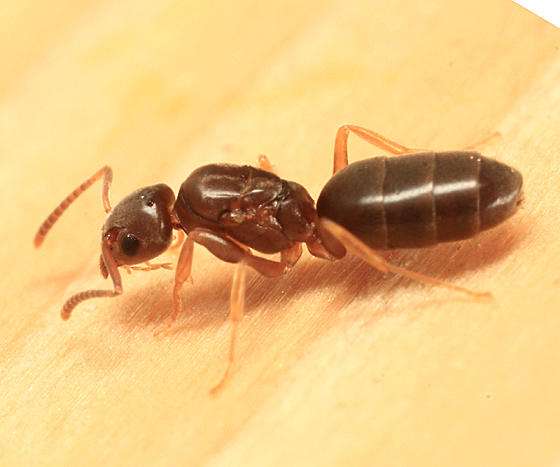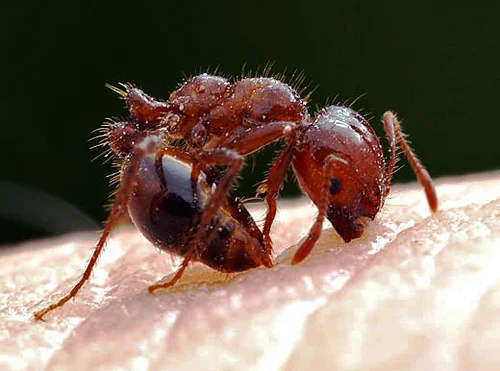
The red imported fire ant is a species of ant indigenous to South America. Its scientific name is Solenopsis invicta. It is a species of Solenopsis that belongs to the Myrmicinae subfamily and was first identified as a different species of S. saevissima in 1916 by Swiss entomologist Felix Santschi. The ant was classified as a distinct species in 1972 and given its current specific name, invicta. The term was kept since it was widely used even though the variety and species of ant were the same.
Where do red imported fire ants live?
Red imported fire ants inhabit a wide range of habitats and are common in changed regions. They can be discovered in electrical equipment, disturbed areas, grasslands, disturbed areas, rain forests, and deserts.
Diet
They are omnivores and consume seeds, honeydew from hemipteran insects, dead animals, arthropods, insects, and insects with which they have established associations.
Predators
Arachnids, birds, and numerous insects, such as other ants, dragonflies, earwigs, and beetles, are among the predators.
Description
The size of fire ant workers varies from 1/16 inch to 1/4 inch, and they are polymorphic. They are reddish brown, black and red, or black and black. Two nodes exist at the waist (pedicel). Antennas are 10-segmented and have a 2-segment club at the end. The wings of queen ants, which are bigger (3/8 inch), are shed after mating.
Within the colony are also alates or reproductives. They have wings that are 3/8 inch long and are bigger than workers.
In open spaces where the colonies are found, red imported fire ants build hills or mounds. On sometimes, colonies form inside buildings and in objects like utility housings and tree trunks. Worker ants quickly run up vertical surfaces in a defensive response to disturbance of mounds.
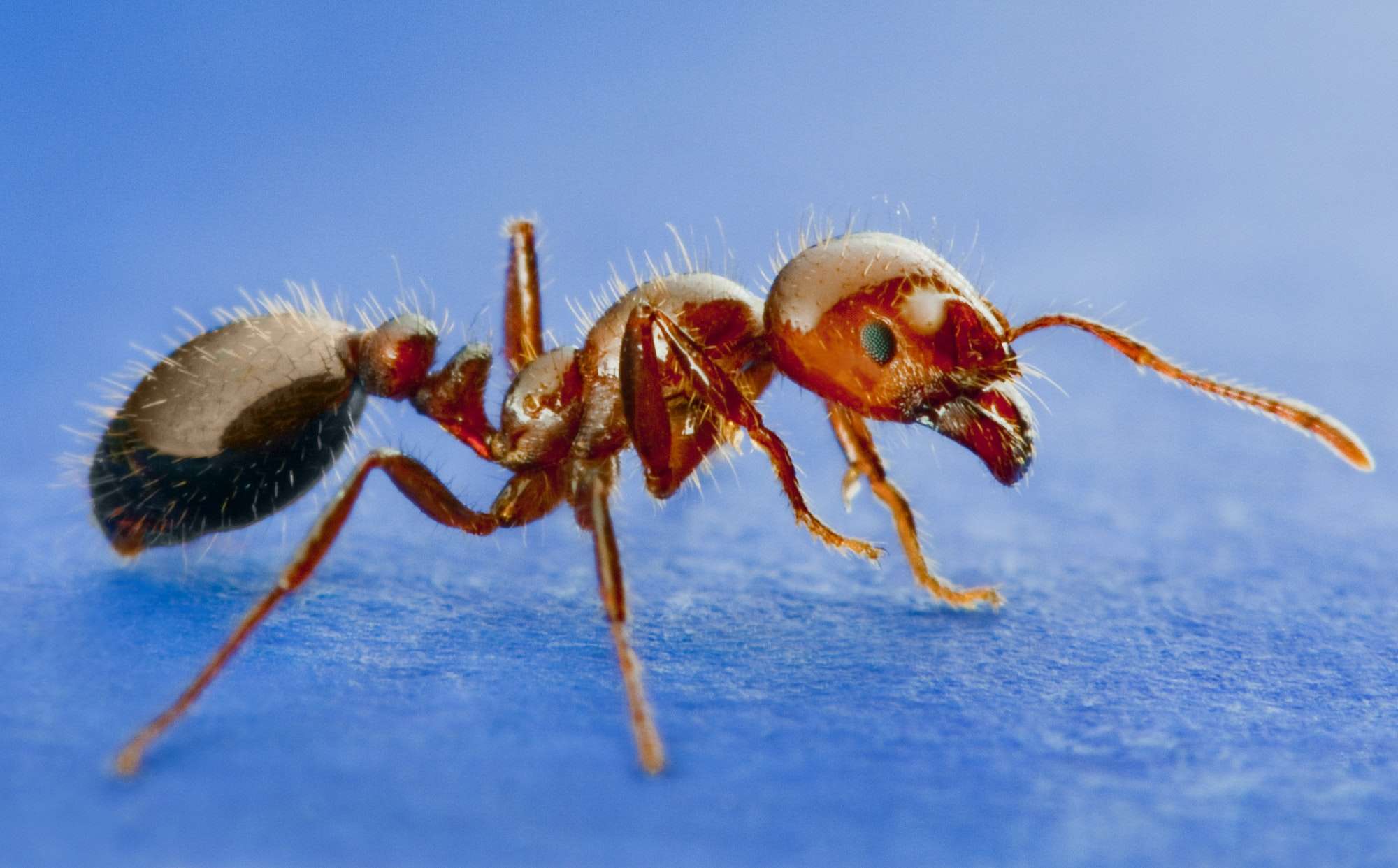
Life Cycle
Complete metamorphosis is displayed by fire ants. Larvae go through four instars (or molts) of development before becoming pupae. Eggs hatch in eight to ten days. Depending on the temperature, development takes 22 to 37 days. As social insects, fire ants have one or more queen ants in each colony. 200 eggs can be laid every day by queen ants. Over 200,000 ants can be seen in a “mature” colony, along with what are known as “reproductives,” which are winged, black-colored male and reddish-brown female ants in their adult stages. Until the right circumstances arise for their nuptial flight, these ants remain in the colony.
Management
- Apply a non-IGR bait or contact pesticide on problem mounds for quick management. When fire ants are actively foraging, that is, when the temperature is between 70 and 90 degrees F, baits are most effective.
- Individual mounds can be removed with contact pesticide treatments that are liquid, granular, dusty, or aerosolized.
- Where maximum suppression is sought, surface-applied, slow-acting, long-residual contact insecticides like pyrethroids or fipronil can also be utilized. Always exercise caution when applying these materials, and keep staff and students away from the area until the soil has been watered in and the application area has dried.
- Colonies or mounds that expand under sidewalks or other pavement areas should be treated with poisonous baits that work more quickly, such as hydramethylnon, indoxacarb, or spinosad.
- If there is an immediate issue, barrier treatments utilizing contact insecticides around outside walls may help minimize the amount of ants foraging inside.
- Pyrethrum sprays should only be used in emergency situations when quick control is required and caulking or sealing cannot be done.
Table
